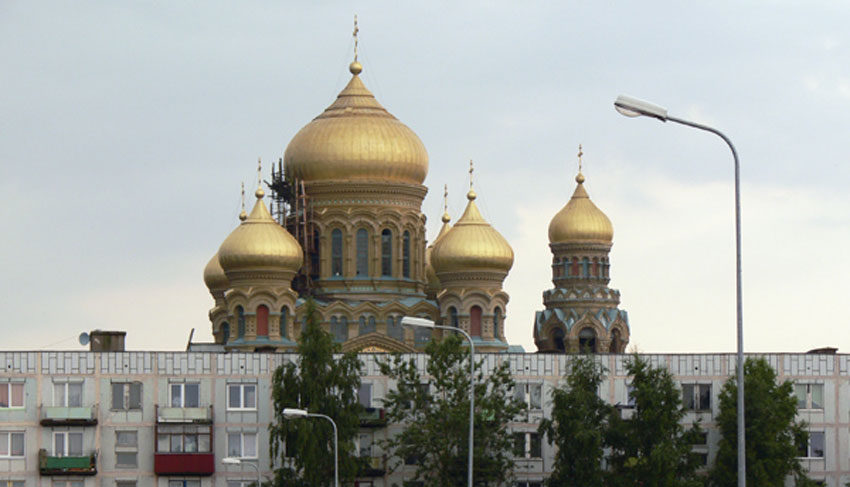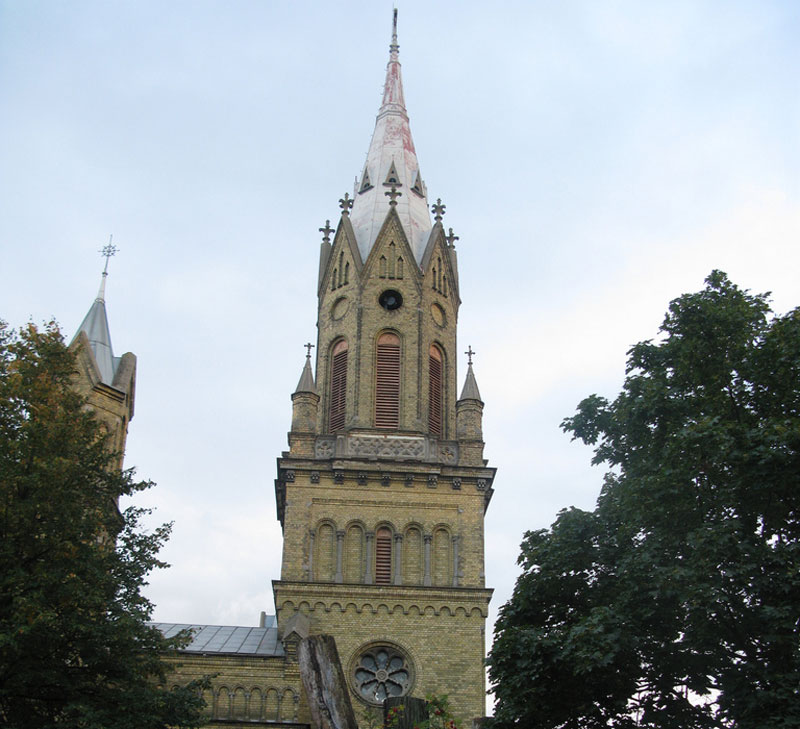
The fourth day of your Baltic Run will see you in beautiful Liepaja, Latvia, “The city where the wind is born”. Liepaja is dotted with more sights and attractions than can be crammed in a day; here are the ones that make it the most unique. Enjoy.
Photo by Helmuts R
Promenade and the amber sundial
You’ll find the Promenade near the channel of Tirdzniecibas. It’s a passage with a waterway populated by some interesting ships on one side, and reconstructed old stores and restaurants on the other.
The sundial you see behind Martins Zaprauskis in the video is the Amber Sundial, created by a community of locals, who each gifted a small piece of amber. The Baltic States are rich in amber – you’ll see it a lot in jewelry and even commemorative coins here.
Anyway, the Promenade is an ideal spot to start your sightseeing, because here begins the city’s so-called “music path”. The idea is to place musical notes to be followed near sights; as you do so, you’re in effect becoming “music in motion”.
Latvian musicians’ Alley of Fame
Continuing the theme, Latvian musicians Alley of Fame is ‘found near first ever rock-cafe of Latvia. The Alley comprises about forty bricks with hand prints of famous past and present Latvian music groups and soloists.A spot near the rock-cafe is also adorned with a gigantic ornamental guitar, the biggest by far in the whole of Latvia. Liepaja is known as the music capital of Latvia, because of the abundance of local musical acts and festivals.
Huge, thriving central market
If you keep walking down the Alley of Fame, you’ll reach Roses’ square (Rozu laukums). On the left, you will see an old-but-modernised building. The little square it overlooks is the former (medieval) market square of the city. But as you can see in the video, the city has long outgrown it; the central market is doing great business every day.
A city of wooden architecture…
As you can see, Liepāja is a good place to see old wooden residential buildings from the 17th to 19th centuries, usually topped with a red tile roof. Though some look like they’re on the verge of collapsing, many others have been renovated and some of them even house some of the city’s best accommodation.
…And some surprising contrasts
The so-called closed town – a former base of the Russian and later the Soviet Navy – just to the north from Liepaja used to be a militarized zone for more than a century. The huge Orthodox Church, found in the middle of the base, has since been returned to the local congregation after serving – yes – as a gym in the Soviet era. Notice a bomb shell being used as a trash can!
Churches of all kinds
Apart from the great Orthodox church, Liepaja is also home to Catholic and Protestant churches galore. If you’d like to get a great view of the city, visit The tower of the Trinity Church (Liela Iela). Also spectacular are St. Joseph’s Cathedral (adjacent to the main market square) pictured above, and its most prominent Protestant (Lutheran) church, St. Anne’s. Historic religious tolerance has translated into the everyday kind here, which makes Latvia one of the most laid-back countries to live in.
Seaside of Liepaja
As you can see, it has an amazing seaside: the three-kilometer long Seaside Park, one of the largest wooded parks in all of Latvia, and the Blue Flag beach, are the pride of Liepāja where you could sit and zone out to the sound of the lapping waves for hours on your Baltic Run.


